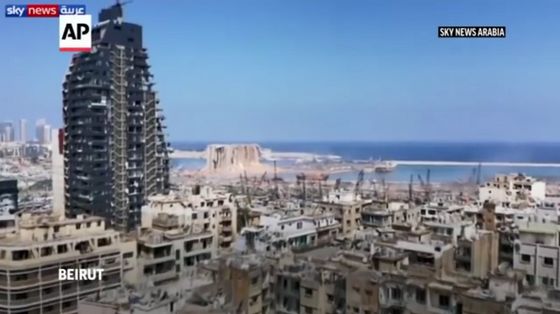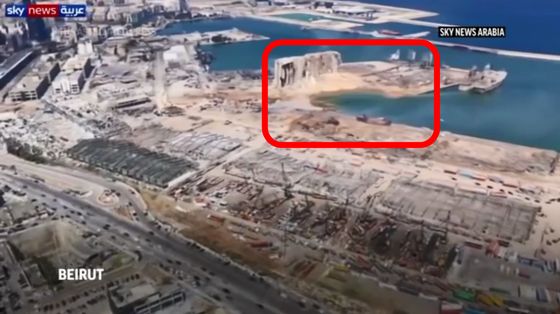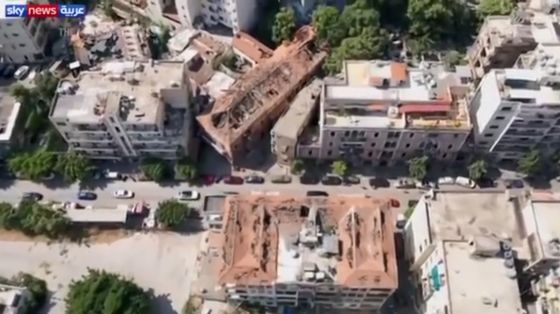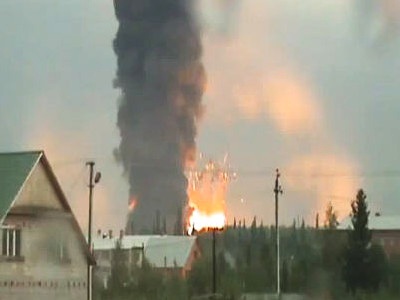Comparative images and movies showing the crater made by the big explosion in Lebanon and the tremendous damage are released

Negligence probed in deadly Beirut blast amid public anger
https://apnews.com/4475998de078a93bbe91b7ac9d43ada2
An estimated 2750 tons of ammonium nitrate has been stored in the warehouse at Beirut Port, where the explosion occurred, since 2014, and it is believed that the sparks of the welding operation ignited and led to a large explosion. While ammonium nitrate is important as a source of nitrogen fertilizer, a substance that is also the raw material of gunpowder or explosives, 581 people were killed Texas City Disaster and 168 people were killed Oklahoma City bombing even, ammonium nitrate and it The explosive used as the raw material caused the explosion.
This is an image comparing the satellite image of the Beirut Port, which was the site, before and after the explosion accident. Not only the buildings around the area are blown away by the blast, but also the ground where the warehouse was located is scooped out and the sea is visible. According to CNN analysis , the crater created on the site by the explosion is about 124m in diameter.
You can see how the Beirut after the explosion was taken from the sky by watching the following movie.
Utter devastation after huge explosion in Beirut-YouTube
The video starts with an aerial shot that seems to have been taken by a drone from the city toward the explosion point.

This is a video that captures the vicinity of the warehouse. There was a warehouse that became the explosion site in the area surrounded by a red frame, but now the shadow of the warehouse disappeared without a trace, and the ground was unnaturally sculpted and turned into a sea.

Buildings near the center of Beirut are also damaged, such as holes in the roof, which can be seen from the sky. In addition, it is reported that

Lebanon's economic condition has been unstable for a long time, and in March 2020,

U.S. Department of Defense officials and members of the intelligence agency told the Associated Press there were no indications that the explosion was caused by a human-made attack, probably due to improper storage of explosives. The 2,750 tons of ammonium nitrate, which was said to have caused the explosion, was said to have been stored in a warehouse at Beirut Port since it was seized from a cargo ship in 2013.

Customs Director Badri Daher told the TV station that the ammonium nitrate stored in the port was dangerous and could affect the safety of employees. Replied that they sent about 6 copies. In the letter, it was proposed to sell ammonium nitrate to a domestic company handling explosives. However, Mr Daher said he was obliged to warn the authorities of the danger, but he was not a technical expert able to do more. The government has ordered that persons involved in port management be placed under house arrest in order to investigate the cause.
There is also a grain silo near the explosion site, where it is estimated that 85% of the grain in Lebanon was stored. However, the explosion said the silo had been torn, and Raoul Nehme, Minister of Economy, Trade and Industry, admitted that all the wheat stored in the silo had been contaminated. However, Nehme argued that the grain in Lebanon will not run out quickly and will import if it runs out.
According to Governor Marwan Abdo of Beirut, the loss from the explosion is estimated to be between $10 billion (about 1.5 trillion yen) and $15 billion (about 1.58 trillion yen), and nearly 300,000 people I answered to a TV station that I lost my house. The Lebanese government has promised that public schools and some hotels will be homes for those who have lost their homes and will compensate victims.
Related Posts:







